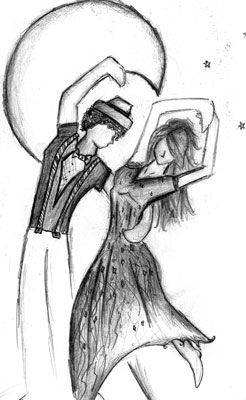All Nonfiction
- Bullying
- Books
- Academic
- Author Interviews
- Celebrity interviews
- College Articles
- College Essays
- Educator of the Year
- Heroes
- Interviews
- Memoir
- Personal Experience
- Sports
- Travel & Culture
All Opinions
- Bullying
- Current Events / Politics
- Discrimination
- Drugs / Alcohol / Smoking
- Entertainment / Celebrities
- Environment
- Love / Relationships
- Movies / Music / TV
- Pop Culture / Trends
- School / College
- Social Issues / Civics
- Spirituality / Religion
- Sports / Hobbies
All Hot Topics
- Bullying
- Community Service
- Environment
- Health
- Letters to the Editor
- Pride & Prejudice
- What Matters
- Back
Summer Guide
- Program Links
- Program Reviews
- Back
College Guide
- College Links
- College Reviews
- College Essays
- College Articles
- Back
Dance is a Sport (and an Art)
According to Cambridge Dictionary, one of the most reliable online dictionaries, a sport is defined as: “a game, competition, or activity needing physical effort and skill that is played or done according to rules, for enjoyment and/or as a job.” As you may have guessed by now, this definition will be used as evidence to support the claim that dance, despite the common bias, is indeed a sport. To further clarify this understanding according to the definition, let’s lay it out broken down in order to fully be comprehended. Is dance a game, competition, or activity? Yes, though not always, dance can be competed, and is also commonly referred to by most everyone as an activity. Does dance need physical effort and skill? Another yes. Not only is dance physically taxing due to the sheer amount of strength and stamina it requires, the equally important flexibility and balance makes it only that much harder. While many other sports also need these four specific skills, dance also requires the body to bend and contort in ways the body wasn’t designed. This doesn’t even begin to expand on the physical limitations a pointe dancer goes through in order to balance all their weight on their first two or three toes. Is dance played or done according to rules, for enjoyment or as a job? This is where it gets a little more up to interpretation and debate. While dance is done for enjoyment and in the professional world through professional ballet dancers, music video dancers, and everything in between, dance doesn’t always have a strict set of rules and requirements. The lack of set rules doesn’t strip dance of its chance of being considered a sport because of one key element; there is a right and wrong way to execute a move or sequence. Especially prevalent in ballet, dance is all about technique and the execution of moves, particularly in competition where it is judged.
For those of you who have made it to the end of this obnoxiously long paragraph, congratulations. For those of you just pretending to read but in reality are thinking about how ridiculous it is I wasted time writing a paper for people who couldn’t care less, you'd be right. I went ahead and made a short list to help summarize the sheer skill and talent one must possess in order to become even a slightly successful dancer.
Because of high physical demand on their bodies, most professional dances retire from dancing during their mid-30s, though many retire prior, depending on their physical needs
Professional dancers typically have about 7 hours of rehearsal and classes each day, sometimes longer depending on upcoming schedules and shows
These hours are nearly identical to that of a professional footballer, though it’s hard to compare the difficulty of performances vs games because the varying lengths and pauses.
Most dancers start when they are only about 2 or 3 years old, lessening chances of becoming professionals as they get older.
Once someone is about 13, it is unlikely they will have a successful career as a dancer.
I am not trying to denounce other common athletic activities, such as football as a sport. I think football is one of the most physically taxing sports you can play with an astronomical risk of serious injury, but I also believe that dance poses its own risks, requirements, and ability that qualifies it as a sport.

Similar Articles
JOIN THE DISCUSSION
This article has 0 comments.
